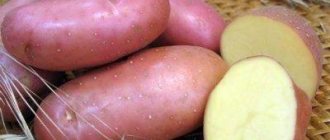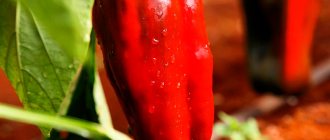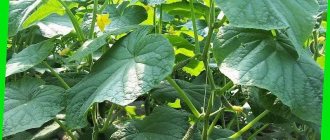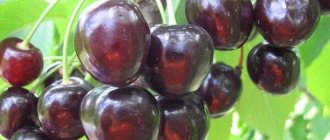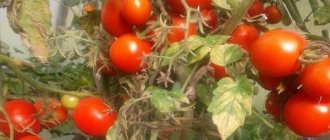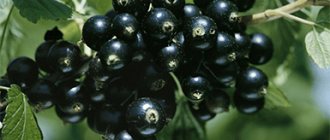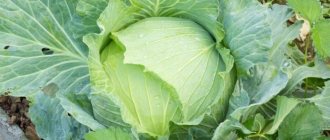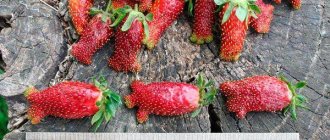The strawberry variety "Sonata" was developed in Holland in 1990. Its predecessors - Elsanta and Polka - at one time acquired a well-deserved reputation among amateur gardeners and owners of industrial strawberry plantings as reliable, high-yielding varieties.
The hybrid, having combined the properties of its predecessors, has acquired new characteristics that allow it to remain relevant for three decades. The copyright holders, the Fresh Forward company, relied on the endurance of the new plant, and they succeeded.
Advantages of the variety
Among the undoubted advantages of “Shelf” are:
- endurance and ease of care;
- resistance to powdery mildew diseases, low susceptibility to gray fruit rot (yield loss less than 2%) and spider mite damage;
- high productivity;
- excellent commercial and consumer qualities of fruits;
- the versatility of their purpose.
Endurance
According to data from foreign sources, “Polka” is classified as a particularly winter-hardy variety, suitable for cultivation in open ground under unfavorable weather and climatic conditions. Plant resistance to autumn and spring (during the flowering period) frosts is also noted.
In tests conducted in 2002-2006. Russian specialists at the collection site of the Kokinsky stronghold of VSTISP in the Bryansk region (where winters are often very cold and snowless), the variety proved to be medium-winter-hardy in terms of the degree of freezing.
The variety is relatively resistant to summer heat and drought and tolerates shade. Based on the results of field tests conducted in 2006–2009. on the irrigated plot of the Samara Research Institute of Horticulture and Medicinal Plants "Zhiguli Gardens", during drought, "Polka" weakly sets flower stalks and sharply reduces productivity (by 23-65%) compared to other varieties.
One of the most important conditions for obtaining good harvests is abundant and regular watering during flowering and during fruiting (in dry weather). Experts consider it necessary to use drip irrigation systems.
Features of fruiting
The variety is characterized by long flowering and extended fruiting. In terms of ripening time, it belongs to the group of mid-ripening ones: the first harvest ripens closer to mid-June, active fruiting lasts up to 4-5 weeks, but by the end of it, the size of the berries is almost halved (especially with insufficient watering).
On average, up to 50 berries ripen on a bush, which allows you to collect from 300-500 g to 2 kg from each plant. The greatest productivity is typical for young bushes, so for commercial purposes the variety is grown in a 1-2-year-old crop. It is recommended to update amateur plantings at least every 3 years. In the southern regions, the bushes develop more powerful and tall, intensively increase green mass and form many mustaches. Due to this, they thicken and degenerate faster. In the conditions of the middle zone, the Polka strawberry, according to gardeners, grows and bears fruit less actively, but produces larger and sweeter berries.
There are usually no problems with propagating the variety. Plants produce a sufficient number of daughter rosettes to produce seedlings; methods of germination from seeds and dividing bushes are practically not used.
Commercial and taste qualities of berries
The variety is considered large-fruited, but only the first fruits are the largest in size and weigh up to 35-40 g. During the fruiting process, they become smaller and weigh on average about 20 g. Ripe berries are easily separated from the stalks, have a uniform, very attractive appearance due to their uniform dark red color (to burgundy or purple) with a glossy sheen and neat rounded-cone shape.
The main advantage of the variety is considered to be the excellent dessert taste of the berries, which earned the highest tasting scores of 4.6-4.9 points (out of 5). Most gardeners describe it as exceptionally sweet (even when not fully ripe), having a caramel tint and a rich strawberry aroma. The pulp is juicy and tender, but quite dense, which allows you to transport the crop without loss, as well as use it for all types of processing and freezing.
History of selection and region of growth
Sonata was bred by breeders from Holland in 1990 by crossing two varieties - Elsanta and Polka . Fresh Forward is the copyright holder of the resulting hybrid and carries out licensing supervision.
The creators took care of versatility, giving strawberries the ability to bear fruit both in open ground and in greenhouse complexes. The plant adapts to almost any conditions, which makes it possible to grow berries in regions with different climatic features.
Work on developing the Sonata variety took about 14 years.
This is one of the most successful projects of Dutch breeders. It is not for nothing that their technologies are considered successful, ideal for industrial applications.
Growing and care
Before you start growing the Symphony variety, you need to familiarize yourself with some of the nuances of caring for the assortment, the observance of which determines the further growth and productivity of the plant.
Watering
Symphony garden strawberries are irrigated moderately. For greater efficiency, drip irrigation is suitable. The “droplet” will prevent water from getting on the foliage and fruits. Without taking into account extreme weather conditions, the frequency of watering is no more than 2 times a week.
Loosening, weed control
At least once a week, the beds not covered with mulch are loosened (no deeper than 3-4 cm) and weeded. Weed control and loosening are one of the main agricultural techniques. During loosening, you must try not to damage the roots so that they do not become vulnerable to fungal diseases.
Removing a mustache
The Symphony variety produces a moderate amount of mustache. During the season, it is necessary to monitor the formation of whiskers, remove excess whiskers and cut off rosettes in a timely manner. Otherwise, they will take the lion's share of the nutrients from the already small berries and will become even smaller.
Top dressing
Symphony garden strawberries are fed starting from the second year of life:
- in early spring, 40 g of ammonium nitrate is added per linear meter of strawberry strip;
- when the berries ripen, fertilize them with nitrophoska at the rate of 30 g per bucket of water;
- In the fall, wood ash is scattered on the beds.
Strawberries are responsive to foliar feeding. For this purpose, ready-made mineral mixtures are used, which include potassium, magnesium, and boron.
In spring, it is important to feed strawberries with nitrogen fertilizers. Rotted manure (a bucket per m2), mullein infusion (1:10) or chicken manure (1:20) is used.
Pest and disease control
The Symphony variety is resistant to many infections, but even if agricultural practices are not followed, it can get sick. The greatest threat comes from fungal infections.
Prevention is carried out in the spring, before flowering begins, by treating the beds with 1-2% Bordeaux mixture or Horus. In the fall, after harvesting, remove the old mulch from between the rows, as pest larvae and fungal spores can settle in it for the winter. To repel nematodes, marigolds are planted around the perimeter of the bed. The bushes are sprayed with calendula tincture, and mustard powder is scattered between the rows to protect against slugs.
Preparing for winter
Symphony tolerates temperatures down to -25℃. However, in cold, snowless areas, the beds are covered for the winter. Coniferous spruce branches, branches of cut raspberries, blackberries, straw, and dense agrofibre on the arches are used as insulating material.
Nuances of crop care
According to the description of the Sonata strawberry variety, obtaining a good harvest is possible only if the rules of care are followed. Understanding them is not so difficult; even a novice gardener can do it.
Watering, weeding and loosening
After planting, the bushes need to be watered abundantly. As they adapt, the volume of water can be reduced. It is necessary to water the soil until the end of September so that the bushes gain strength for wintering.
Irrigation in spring should be intensive during flowering and reduced during fruit ripening (minimum 7 liters per square). Monitor the condition of the soil, do not allow excessive moisture.
Weeding is a mandatory procedure when it comes to growing Sonata strawberries. If the beds are clean, pests will not accumulate on them. In addition, strawberry bushes will receive more essential microelements.
Fertilizer and mulching
Strawberries are very demanding when it comes to feeding. The fertilizers used must include magnesium, manganese components, iron, and other elements. In the spring season, it is recommended to use fertilizers containing nitrogen, which accelerate growth.
Before the bushes begin to bloom, treat the soil with azophoska, dilute 2 tablespoons of this substance in a bucket of water. To increase the yield, spray the bushes with a solution consisting of a bucket of water and the compositions Ryazanochka and Sudarushka (5 milliliters each).
It is necessary to mulch the soil with compost or rotted manure. Mulching must be done 6 months or 14 days before planting. To disinfect the soil, use green manure.
Providing protection from frost
At the end of summer, strawberries need to be cut, the ground should be cleared of weeds and debris. At the beginning of autumn, the soil must be fertilized with manure that has rotted, or with mineral fertilizers. In October, the soil is covered with straw or agrofibre (layer thickness - 50 millimeters).
Strawberry Sonata
The Sonata variety has a good reputation, so when I thought about changing the variety, I settled on it. The bushes are small, compact, with medium foliage; planting in our continental climate is recommended in July or early spring. I planted them in July so that the seedlings would take root well. In the spring, I added a lot of humus to that area. In September, I covered it with straw so that it would winter well. The distance between the rows was 80 cm, as advised by agricultural technology. You need to apply fertilizer regularly, then the yield will be high, I also treat it with the “Ryazanochka” solution - 5 ml per 10 liters of water, then the yield is maximum - up to 1 kg per bush. The berries are large, on average 50 grams, bright red in color, with pink flesh. For the sweetness of the berries, you need to select a sunny area and preferably protected from drafts. Requires good watering, but do not overwater. The variety is resistant to diseases, especially powdery mildew, but its weak points are heart and root rot, and is sensitive to verticillium. To avoid this, you should not use fresh manure as fertilizer. I replant seedlings every 4 years, in the 5th year the berries become completely smaller - I grow no more than 10-15 grams.
They wanted to take the Sonata variety from their neighbors, but when I came to their site, I saw that there were only a minimal amount of runners, and with difficulty I separated a dozen bushes for planting. Already in the process of growing it myself, I assessed this nuance as positive - I rarely had to tear off my mustache. But in order to start a large plantation, we had to buy 20 roots at the nursery and then painstakingly replant the rosettes for 3 years until we planted the entire hundred square meters. You have to water the strawberries carefully - our summers in the Azov region are usually hot. But the variety blooms early and begins to ripen in the first ten days of June. In calm weather there is such a thick strawberry aroma over the site! The yield varies, but with good feeding, 1.5 kilos per bush is guaranteed. We most often use humus as a top dressing - we make grooves along the rows and pour out the pre-prepared solution. The variety is resistant to diseases; treatment of the bushes is not required. We water regularly, the approximate water consumption is 1 liter per bush. We are planning to do drip irrigation, which is less time consuming. The berries are dense, the flesh inside is homogeneous and sweet.
They brought Sonata into their home several years ago. Gradually, this variety replaced the less productive ones - I gradually planted a free area with these bushes, and uprooted and removed them - it’s better to devote energy to such a high-yielding variety than to waste time. The bushes are small, they produce little tendrils, and in this regard they are not a troublesome variety. It loves moist soil, so you have to constantly monitor this - the berries become small and dry if you don’t water them on time. But you shouldn’t constantly keep the soil waterlogged - this is how gray rot appears on the berries. Since our soil is heavy, we specially brought 2 truckloads of black soil to the site. When planting, I added a glass of humus to each hole. Mulching prevents weeds. For it we take either straw or sunflower husks. We plan to use agrofabric for future replanting - nevertheless, there is dirt on the berries after rains and watering and they need to be washed thoroughly. I have garlic planted between the strawberry bushes - this saves me from strawberry mites - my neighbors' strawberries are damaged, but ours are not. Yields up to 1 kg per bush. The berries are dense, with a pronounced strawberry flavor and a wonderful aroma.
Of all the varieties I have at my dacha, “Sonata” bears fruit longer - the berries begin in mid-June and end only by August. For our area near Moscow, I consider it a godsend: the bushes are small, compact, do not grow much, they don’t produce a lot of tendrils, so the berries do not get smaller from year to year, even if you don’t thin out or plant the beds. Due to the fact that there are not a lot of leaves, the bushes do not mold or rot. The only thing is that you need to regularly pull out the grass and weeds, otherwise they will completely clog the strawberries. It is not harmful in the neighborhood; it tolerates onions, garlic, and spicy herbs nearby well. It’s just not friendly with potatoes, I once tried to plant tubers nearby, but this year “Sonata” yielded half as much and the berries were all kind of unsightly in appearance and taste. It is also picky in terms of weather; there is no need to try to cover it in the heat, since the berries practically do not bake and you should worry if the summer turns out to be cloudy. The berries will still be sweet and juicy, just not as bright. Since the pulp of this variety is quite dense, and the size of the fruit is not gigantic, the berries in the jam do not boil into porridge, but remain almost whole, which looks very beautiful on the table.
Diseases, pests and methods of prevention against them
The variety is not as susceptible to powdery mildew as other types of strawberries. However, the heart and rhizomes of Sonata strawberry bushes often rot. In addition, this variety is very susceptible to verticillium.
To prevent illness, follow these recommendations:
- plant seedlings at the distance indicated above, do not allow the beds to become crowded;
- clean plants from leaves and branches that are damaged;
- carry out rejuvenation;
- avoid using fresh manure;
- treat the rhizomes of seedlings before planting with a weak manganese solution;
- Do not allow the soil to dry out or become waterlogged.
Having discovered verticillium, treat the plants with special means. You can use Benorado, Fundazol. You can prevent the spread of gray rot by spraying the bushes with Teldor and Bayleton.
Characteristics of the variety
Sonata's bush is tall and powerful, but at the same time it looks quite compact due to its medium spreading nature. Also, the bush is rather poorly covered with leaves. The leaf blades are medium sized and covered with wrinkles. The color of the leaves is bright green.
As for the cognitive ability, it is quite poorly developed.
The flowers of garden strawberries are bisexual, so they do not need a pollinator to obtain a good harvest. The flowers are large, white.
The flower stalks are powerful, tall, and located above the level of the leaves. After ripening, the berries are held above the ground.
Sonata fruits are medium in size, wide-conical in shape. Sonata berries are famous for being more uniform in shape and size, which undoubtedly attracts buyers in the market.
The shell of the berry is bright red, glossy, and does not tend to darken after harvesting or during storage. The seeds are yellow in color, slightly pressed into the pulp of the fruit.
The pulp of the berry is light pink, dense in structure, but not hard. The berry is not hollow, juicy, and exudes a fairly strong strawberry aroma.
The taste of the berry is rated as dessert. The taste is sweet and sour, with a strong dominance of sweetness.
The fruits have a universal purpose. They are suitable for fresh consumption, ideal for processing (preparing jam, compote, jam), and are also suitable for freezing.
Due to the good density of the berries, they can easily withstand transportation over long distances, which increases their commercial value. After picking, the berries do not squash or flow, which is also a plus for commercial cultivation.
The berries are quite easily separated from the stalk. Also, it is worth noting that the harvest ripens together, thereby simplifying the collection of marketable products. As for the yield of marketable products, the average figure is within 80% (although in some farmlands the owners achieved figures of 95%).
The average weight of berries is in the range of 25-35 grams. When first picked, the berries are somewhat larger and can reach a weight of 50 grams.
Another advantage of the Sonata variety is that the berries do not become smaller by the end of the season, which is observed in most varieties of garden strawberries.
Garden strawberries of this variety bloom as quickly as they ripen. The berries begin to sing in mid-June, at approximately the same time as Elsanta. In greenhouse conditions, naturally, ripening begins much earlier.
As for the yield, it is quite high. With good care, you can harvest up to 1.5 kg of berries from 1 Sonata bush. Of course, such results cannot be achieved at home, but Sonata will still please gardeners more than other varieties that produce 300-500 grams of berries per bush.
The immune system of strawberries is quite strong. Sonata is resistant to a number of strawberry diseases, in particular, it is rarely affected by powdery mildew and gray rot. However, it is susceptible to diseases such as verticillium and various types of spotting.
Pros and cons of garden strawberries
Advantages of strawberry Sonata:
- consistently high productivity;
- long fruiting period;
- excellent taste and commercial quality of berries;
- cold resistance;
- drought resistance;
- excellent adaptation to any weather conditions.
Disadvantages of the variety:
- weak formation;
- low frost resistance.
Landing
Jive garden strawberries are planted within the standard time frame for the crop. Spring is April and May depending on the climate. In the fall, it is necessary to plant as early as possible so that the bush has time to get stronger and form flower stalks for the future harvest. It is optimal to plant at the end of summer so that the bushes form several horns before frost.
Jive loves sunny areas and light sandy soil enriched with humus. The better the soil conditions, the higher the yield. Optimal soil acidity pH 5.2 - 5.5. Before planting, when digging, add a bucket of humus or compost to the garden bed with the addition of 200 g of wood ash.
When the soil has settled, you can begin planting according to the following one- or two-line scheme:
- 25-30 cm between bushes;
- 60 cm between rows;
- arrangement of rows for better illumination: from north to south.
The hole must be so deep that the root collar remains flush with the soil surface, otherwise the plant will hurt. At the end of planting, the bed is watered and mulched with straw, sawdust, compost or non-woven material.
Foreign selection
The culture is widespread in many countries of the world, so there are many varieties of foreign selection.
The Netherlands, USA, France, Italy and other countries are famous for their own hybrids. When choosing a crop for amateur and industrial cultivation, farmers pay attention to the following varieties:
- Alba. The variety was bred by originators from Italy. This is an elite variety with high taste, which gained popularity in Russia in the 2000s. The berries are elongated, bright red. The weight of one copy is 30–50 g. The taste is dessert, almost without sourness.
Honey. A well-known hybrid bred in the USA in 1979. To obtain the variety, breeders crossed the Vibrant and Holiday species. Ripening begins in the second half of May. The appearance of the berries is cone-like. The skin is distinguished by a purple color with a glossy sheen. The pulp is elastic, juicy, pink in color. The average fruit weight is 30 g.
Lambada. The variety was bred in the Netherlands in 1982. Mother varieties - Holliday, Silvetta, Primella, Karina. The fruits are cone-shaped, ripen, weighing up to 20–30 g. The skin has a pronounced red hue. The pulp is pink in color, medium elasticity. The taste is sweet and sour. The average yield per bush is 150–200 g.
Planting seedlings
The choice of high-quality seedlings ensures harvesting in the first, or maximum second, season.
Selected seedlings should have 4-5 leaves, free of spots or plaques, even in color, with elastic skin. A sign of good quality is a thick horn (at least 0.7-0.8 cm).
It is worth discarding a flaccid sprout, giving preference to a fresh one with fibrous roots more than 7 cm long. According to reviews from experienced gardeners, seedlings grown using frigo technology have proven themselves well.
A sunny area is suitable for creating beds. Ideally, it should be protected from the winds by tall trees or bushes growing nearby.
A high groundwater level or the location of the garden in a low-lying area can cause root rot or fungal infections. Therefore, an elevated location will be preferable.
Before planting, the soil is cleared of weeds and debris. Weeding should be carried out carefully, removing roots deeply embedded in the soil. This procedure will make it easier to care for strawberries during their growth and especially fruiting.
When choosing a site, preference should be given to a place where leafy vegetables, onions, garlic or legumes were previously grown.
Sonata loves light, slightly acidic, and most importantly fertile soil.
The degree of nutritional value can be determined by the plants growing on the site:
- white clover lives on infertile soil;
- nettle and woodlice indicate the presence of nitrogen, which excludes the introduction of nitrogen fertilizers;
- coltsfoot, horsetail, and horse sorrel grow on heavy soil, which means it should be diluted with sand.
It is better to enrich the area with nutrients with compost or rotted manure. This should be done six months before planting (in the fall if planting is planned in the spring) or 2 weeks before spring work. Green manure is used for disinfection.
Planting is recommended in July or early spring. The distance between the tubers is 25-30 cm. The July seedlings will have time to adapt to the new location and form buds, which will ensure productivity in the next season.
The spring version also has favorable conditions for the vegetative process. The worst time to plant is late summer and autumn. The plant will barely have time to undergo adaptation, but will not gain strength for wintering.
How and when to plant
It has already been noted that the variety gives the best results in terms of yield in areas with sandy or loamy soil with low acidity. When planting in poorly drained or heavy soil, you can observe damage to the bushes by root diseases.
If the groundwater in the area lies close to the surface, then the bushes should be planted on hills or high beds. Before planting, the material should be kept in a damp soil mixture in a small container. Bushes need to be planted in well-watered and warm soil.
Gardeners should adhere to the following rules when planting:
- The best place to set up a strawberry plantation is considered to be where garlic, onions, carrots or legumes were previously planted. It is not recommended to plant strawberries where there were previously potatoes, tomatoes or sunflowers; It will also be useful to find out whether it is possible to fertilize strawberries with ash.
- It is best to plant planting material in the evening or on a cloudy day; this method will help young plants take root better;
- Planting can be done both in early spring and early autumn. When planting in autumn, the timing must be respected - the bushes must take root before the onset of real frosts;
- The roots of the bush should be carefully distributed in the hole so that they are not curled into a ball;
- Pay careful attention to the location of the growth point - the heart - it must protrude above the soil surface; It is imperative to understand how to fertilize strawberries in the spring to increase the yield.
- The bushes do not grow over time, so you can plant according to a pattern of 25-30 cm from each other;
- At the end of the planting work, the entire plantation is watered generously, and if possible, mulch is spread under the bushes. For that. In order for strawberries to grow more efficiently, it is necessary to choose the right green manure for strawberries.
The video shows the correct planting of strawberries:
These simple rules will help you create a healthy berry garden, and you will enjoy your own aromatic and tasty products all summer long. You may also find it useful to know whether it is possible to plant garlic next to strawberries.
Growing and care
If you follow simple agricultural techniques when growing the Sonata variety of strawberries, then a good harvest is guaranteed.
Watering
A young plant needs a lot of water. Watering is gradually limited. Strawberries need a lot of moisture during the flowering period and at the beginning of fruiting. In the absence of natural precipitation, at least 3 liters are poured under each bush. water. Watering is done twice a week.
Irrigation continues in the summer and in September, adjusting their frequency depending on weather conditions and soil conditions. Both drying out and waterlogging should not be allowed.
Loosening, weed control
The most important activity when caring for strawberries is timely weeding. Weeds should not be allowed to choke out a cultivated plant, take away its nutrition and moisture, or shade it from the sun. Clean beds are a guarantee of protection from diseases and pests. Mulching will make weed control easier. Straw, sawdust, and spruce litter can be used as mulch. Pine and spruce needles serve as good prevention against raspberry and strawberry weevil. The pest cannot break through the mulch, and females do not lay eggs near the bushes, because they are repelled by the pine smell
When using mulch, it is important to remember that organic mulch material begins to rot and, at the beginning of this process, binds soil nitrogen. To prevent nitrogen starvation, you need to water the mulch with mullein infusion (1:10), chicken droppings (1:20) or herbal infusion
Removing a mustache
Strawberries of the Sonata variety produce an average number of whiskers. Caring for the plant in terms of removing the whiskers is not difficult; you will need to trim them no more than two or three times a season. If you plan to propagate the strawberries, each arrow is directed to a free piece of land where the rosette can take root freely. It is advisable to divide the bushes into fruiting and uterine ones (from which it is planned to obtain mustaches). All flower stalks are removed from mother plants so that the plant spends energy only on the formation of seedlings.
Top dressing
Sonata strawberries produce large fruits in large quantities for several years in a row, so they need constant feeding. To maintain the balance of nutrients, at least 1 liter must be poured under each bush during the season. diluted humate. Any other drug that contains magnesium, manganese, and iron will be suitable. In spring, nitrogen fertilizing brings an effect.
Organic matter can be applied in spring and summer, 2-3 times per season, observing the proportions. Fresh mullein is diluted 1:10, bird droppings 1:20. 3 liters are needed per bush. solution. Fertilizers are applied to beds that have been previously watered with water to prevent burning of the root system.
Do not forget about fertilizing after fruiting; in the fall, the bushes develop and flower buds form on them, which determine the yield of the next season. You can use complex fertilizer “Autumn”.
Pest and disease control
Strawberries of the Sonata variety have strong immunity to many diseases. When planting a crop in heavy soil, a fungal infection may develop on the roots.
In the spring, autumn mulching material is removed from the plantings as early as possible. Weeds are removed in a timely manner. When infected with verticillium or gray mold, treat with Fundazol or a similar fungicide.
Preparing for winter
In August, the beds are cleared of weeds and old leaves. The soil is enriched with rotted manure and mineral fertilizers. Before the onset of frost, the beds are covered with straw or agrofibre. The foliage on the bushes is not completely removed. Strawberries are evergreen plants; complete removal of foliage is very stressful; instead of forming flower buds, the bushes will re-form foliage.
How to properly care
Caring for strawberries of this variety involves:
- Timely watering.
- Feeding the crop.
- Regular weeding.
- Providing protection from frost.
- Pest control.
- Timely treatment of diseases.
More details in the material: how to properly care for strawberries to get a good harvest.
How to water correctly
For this variety, the best type of irrigation is a drip system.
When planting in autumn, strawberries must be irrigated before the beginning of October. This is necessary so that the plant gains strength for the winter.
The intensity of spring irrigation increases during flowering. When the crop begins to bear fruit, it decreases. The optimal dosage is 7 liters/1 square meter.
The plant needs to be watered 2 times/14 days.
If it is very hot outside, then the crop needs a lot of water. The optimal dosage is 7 liters/1 square meter. Each bush requires up to 1 thousand ml of liquid.
How to feed correctly
The Sonata variety responds well to the spring application of mineral fertilizers.
This strawberry variety is demanding in relation to the composition of the fertilizer. The fertilizers used must contain:
- microelements;
- iron;
- manganese;
- magnesium.
With the arrival of spring, it is recommended to use fertilizers containing nitrogen. This bait helps stimulate the development of the bush.
Before the flowering begins, the soil should be treated with azophoska. To do this, you need to dilute 2 tablespoons of the raw material in a bucket of cool boiled liquid. The optimal dosage is 1000 ml.
To increase the yield, you need to treat the strawberry bushes with a solution of sudrushka or Ryazanochka. For 1 bucket of cool liquid, 5 milliliters of product is enough.
For garden strawberries, experienced gardeners recommend Ryazanochka complex fertilizer.
Weeding features
If the beds are clean, the plant will be reliably protected from insects and the development of dangerous diseases. But the berry will also retain a large amount of useful substances.
Before harvesting, you need to weed strawberries at least 3 times per season.
Providing protection from frost
Strawberries are mulched with wood chips, straw or hay.
In August the bushes should be cut off. Next, you need to remove the remaining weeds and other debris.
In the second half of September, it is necessary to cover the ridges with a 5-centimeter layer of straw. And you can also use agrofibre.
Spruce and pine sawdust cannot be used, as this contributes to acidification of the soil.
Protection from diseases and pests
Verticillium wilt of strawberries.
In addition to verticillium, Sonata is prone to rotting of the root system and heart. Preventive manipulations will help avoid dangerous consequences. To do this you need:
- plant bushes at the recommended distance;
- avoid crowding of beds;
- cut off damaged leaves and branches in a timely manner;
- regularly carry out anti-aging procedures;
- do not use fresh manure;
- before planting, treat the plant’s root system with a weak manganese solution;
- do not allow the soil to become waterlogged;
- avoid drying out the soil.
Preparations intended to combat diseases and pests are presented in the plate.
Fighting gray mold
Gray rot particularly affects berries close to the ground.
It is recommended to spray the crop with Bayleton, Teldor, and Fundazol.
Description of the variety
The variety was developed by specialists from the Dutch agricultural company Fresh Forward in 1990. Being the result of the selection of “Elsanta” and “Polki”, “Sonata” inherited from its parents excellent productivity and high adaptability to various weather conditions. The plant is distinguished by abundant fruiting, which is observed even in dry seasons. The flowers of the plant are not afraid of night frosts and adapt well to cold climates. The culture has good immunity and is quite resistant to many diseases.
In addition, “Sonata”, being a mid-early variety, is distinguished by a long fruiting period, which, if favorable conditions are created, can begin as early as early June.
The plant is represented by compact, leafy bushes forming a moderate number of tendrils. The peduncles have a dense structure, which allows them to support the weight of large berries. The fruits of "Sonata" are distinguished by their regular wide-conical shape and deep red color. The pulp has a dense and at the same time delicate structure, and a sweet dessert taste with mild sourness. Particularly large fruits can weigh up to 50 g, reaching a diameter of 3.5 cm. The calorie content of 100 grams of berries is only 30 kcal, which allows us to consider this variety a dietary product.
One of the important characteristics of the crop is its high yield, thanks to which up to one and a half kilograms of berries can be harvested from one bush per season. The large number of fruits is explained by the active flowering of the plant, which becomes possible due to the accumulation of a huge amount of pollen and the massive appearance of new ovaries. After full ripening, Sonata berries can remain on the bush for some time. This is due to their excellent shelf life and resistance to spreading and cracking. The productive period of the plant lasts for 40-50 days, of which the largest number of berries ripen in the second half of June.
Then the yield declines, maintaining low productivity until the end of July. The plant is capable of bearing fruit for 5 years, after which the amount of harvest decreases noticeably and the plantation needs to be replaced. The crop can grow and produce a bountiful harvest both in a greenhouse and in open ground. The marketability of strawberries refers to what percentage of the crop is free from defects and retains the integrity of the fruit after being picked from the bush. For “Sonata” this figure corresponds to 70%, which distinguishes the variety favorably from other horticultural crops and allows its cultivation on an industrial scale.
Harvesting and storage
The variety is considered quite productive. During the season, it is possible to get 1.5-2 kilograms of fruit from one plant. If the strawberries grew in closed ground conditions, then it is possible to get up to 14 kilograms of fruit from one square.
The collected fruits are placed in plastic/wooden boxes, which are covered with soft paper or fabric material. The berries are placed in one layer. There is no need to sort fruits before storing them. It can be done later, before the berries are eaten. The slightest movements of the fruits in the container can cause damage, causing them to quickly darken or rot.
Berries need to be cooled to zero to two degrees as quickly as possible after picking. Chilled berries can be stored in the refrigerator for 3-4 days. Unrefrigerated fruits remain fresh for only 1 day.
For storage, use glass jars or containers with lids. There is no need to rinse the fruits before storing; they will begin to produce juice.
Growing berries is an interesting and useful activity, especially if you can harvest a large harvest. Strawberries Sonata are considered productive, the main thing is to try and provide proper care to the bushes of this plant.
